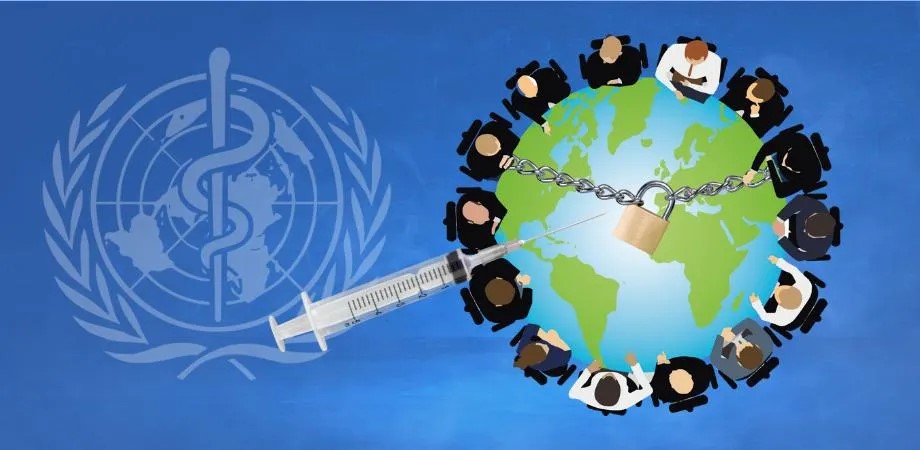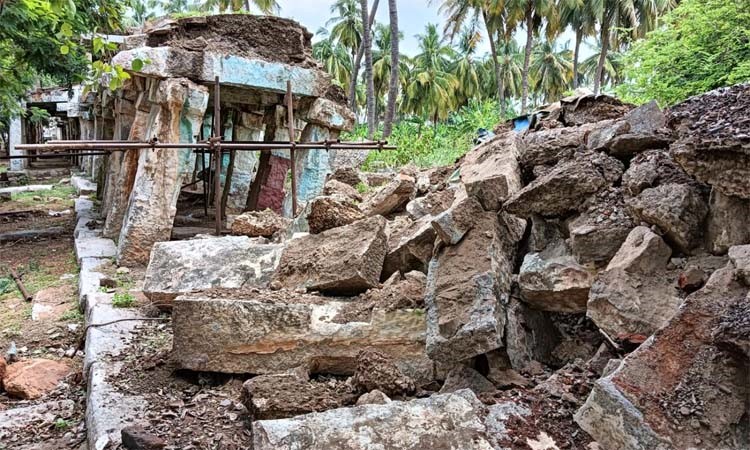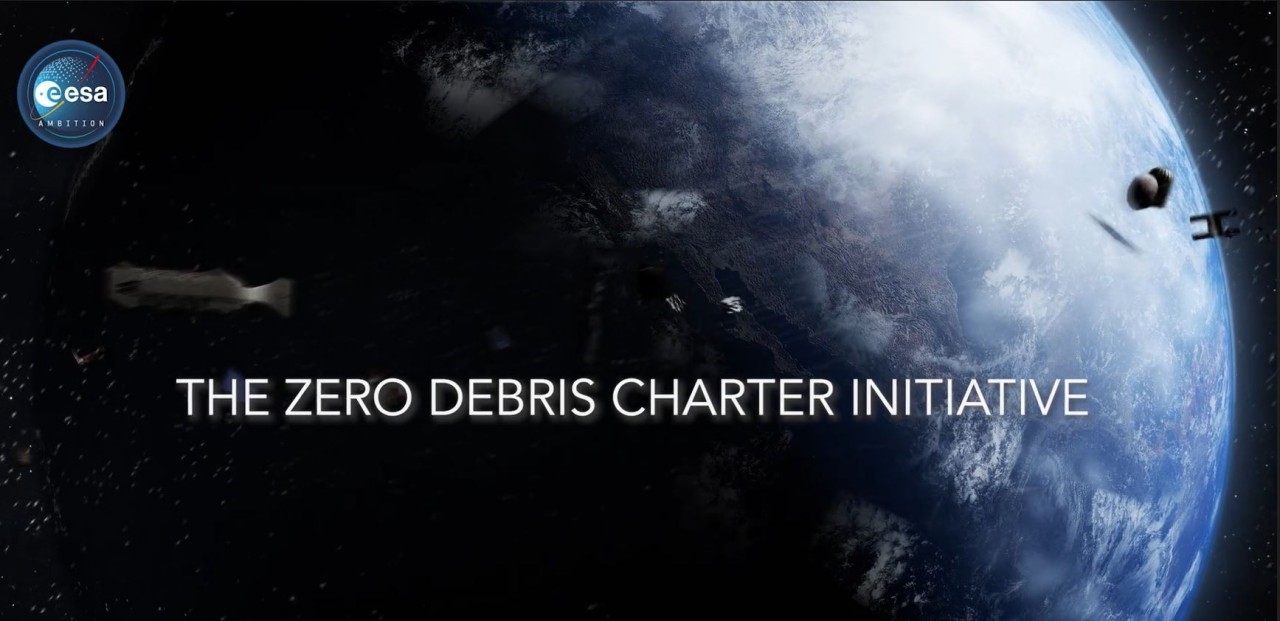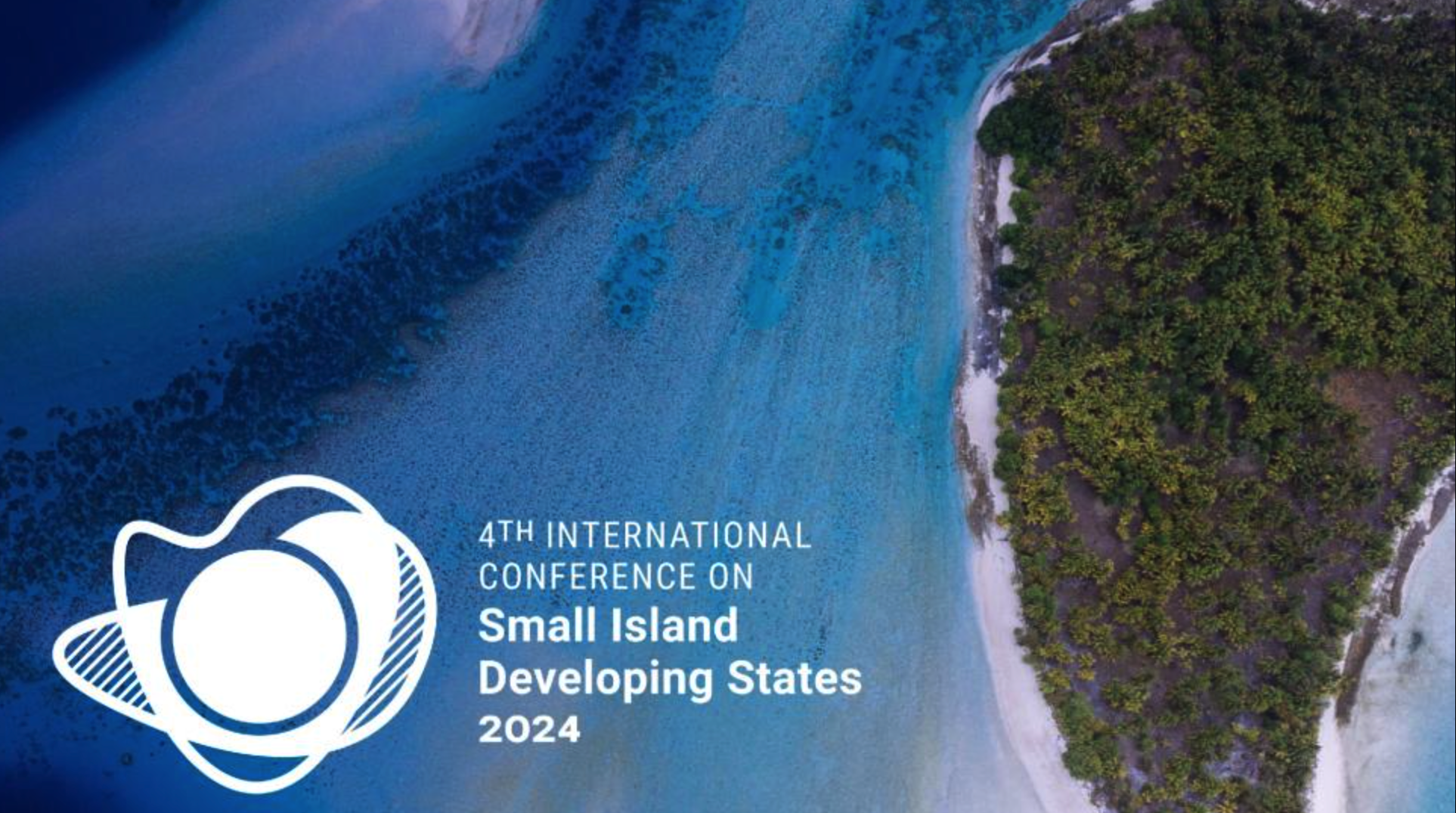WHO Pandemic Treaty

- 27 May 2024
Why is it in the News?
Health officials from the 194 member states of the World Health Organization hope next week to complete more than two years of negotiations on new rules for responding to pandemics when they gather in Geneva.
What is the Pandemic Treaty?
- The "Pandemic Treaty" or "Pandemic Accord" refers to an ongoing process at the World Health Organization (WHO) to negotiate an international agreement or convention on pandemic prevention, preparedness, and response.
- The idea was proposed in late 2020 amid the COVID-19 pandemic to strengthen global coordination and solidarity in addressing future pandemic threats.
- The WHO already has binding rules known as the International Health Regulations (2005) which set out countries’ obligations where public health events have the potential to cross national borders.
- These include advising the WHO immediately of a health emergency and measures on trade and travel.
- Adopted after the 2002/3 SARS outbreak, these regulations are still seen as functional for regional epidemics such as Ebola but inadequate for a global pandemic.
Key points about the proposed Pandemic Treaty/Agreement:
- Objective: To establish a global framework and rules to ensure better cooperation, data sharing, and coordinated response during future pandemics.
- Legal Status: It would be a legally binding international instrument, like a treaty or convention, requiring ratification by WHO member states.
- Core Elements: Likely to include provisions on equitable access to countermeasures, strengthening health systems, information sharing, One Health approach (human-animal-environment interface), and funding mechanisms.
- Negotiation Process: In December 2021, the World Health Assembly established an intergovernmental negotiating body to draft and negotiate the instrument through a member-state-led process.
- The goal is to learn from COVID-19 experiences and create a binding global framework that facilitates a more coherent, better-coordinated international response to potential future pandemic threats.
How will the Global Health Rules change?
- The updates to the International Health Regulations (IHR) include:
- A new alert system to provide different risk assessments for future outbreaks, addressing criticisms that the current system delayed the COVID-19 response.
- Introducing an intermediary alert stage called “early action alert,” in addition to the existing Public Health Emergency of International Concern (PHEIC).
- Considering a “pandemic emergency” designation for the most severe health threats, filling a gap in the current system which does not use the term "pandemic."
- Strengthening state obligations to inform the WHO of public health events, changing the language from “may” to “should.”
How Do Countries View the Pact?
- Negotiations have been marked by significant differences between wealthy and poor countries.
- The talks missed a key May 10 deadline, nearly collapsing and prompting WHO Director-General Tedros to call an emergency meeting to boost morale. Contentious issues include:
- The sharing of drugs and vaccines.
- Financing, with debates over setting up a dedicated fund versus using existing resources like the World Bank’s $1 billion pandemic fund.
- Political pressure, particularly from right-wing groups and politicians concerned about sovereignty, which the WHO denies.
What Happens Next?
- The new IHR rules and the pandemic accord are intended to complement each other, but opinions vary on whether one can exist without the other.
- Sources indicate that IHR negotiations are more advanced and likely to pass, with changes taking effect automatically after 12 months unless countries opt-out.
- In contrast, the pandemic treaty requires ratification, potentially taking years.
Virupaksha Temple Hampi

- 27 May 2024
Why is it in the News?
The historical Saalu Mantap (pillar line), located on the premises of the Virupaksha Temple in Hampi, a UNESCO World Heritage Site, collapsed after heavy rain lashed the region on Tuesday night.
What is the Historical Significance of Virupaksha Temple?
- The Virupaksha temple gained prominence and underwent extensive expansion in the 14th century during the Vijayanagara Empire (1336 to 1646).
- Founded by Harihara I of the Sangama dynasty, the Vijayanagara Empire expanded from a strategic position on the banks of the Tungabhadra River to become one of the most powerful kingdoms of its time.
- The temple was built by Lakkan Dandesha, a nayaka (chieftain) under the ruler Deva Raya II, also known as Prauda Deva Raya of the Vijayanagara Empire.
- The temple flourished under the patronage of the Vijayanagara rulers, who were great builders and patrons of art.
- It became a vital centre for the religious and cultural activities of its time.
- It is a prime example of Dravidian temple architecture, characterised by its grand gopurams (towering gateways), the shikhara towering over the sanctum sanctorum, its intricate carvings and pillared halls.
- Richly adorned with carvings and sculptures, the gopuram depicts various deities, mythological scenes and animals.
- The sanctum sanctorum houses the Shiva lingam, the main object of worship.
- Historians say all temples had pavilions where traders sold articles, such as those used in worship.
- Sometimes devotees visiting the temple also camped under the pavilions.
- With several other temples and structures located there, Hampi was the empire’s capital city and stands today as evidence of what is known as the last ‘great Hindu empire’ of South India.
- UNESCO also recognised its uniqueness and categorised the Group of Monuments at Hampi as a World Heritage Site.
Zero Debris Charter

- 27 May 2024
Why is it in the News?
Twelve nations have signed the Zero Debris Charter at the ESA/EU Space Council, solidifying their commitment to the long-term sustainability of human activities in Earth orbit.
What is the Zero Debris Charter?
- The Zero Debris Charter is an initiative of the European Space Agency (ESA) and a non-legally binding, technically driven and community-building instrument.
- It is a world-leading effort to become debris-neutral in space by 2030.
- It outlines high-level guiding principles and sets ambitious, collectively defined targets to realize the goal of Zero Debris.
- The charter has been endorsed by countries including Austria, Belgium, Cyprus, Estonia, Germany, Lithuania, Poland, Portugal, Romania, Slovakia, Sweden, and the United Kingdom.
What are Space Debris?
- Space debris encompasses all non-functional, man-made objects in Earth's orbit or re-entering the Earth's atmosphere.
- This category includes decommissioned satellites, spent rocket bodies, fragments resulting from spacecraft breakups or collisions, and debris from anti-satellite weapon tests.
- Presently, there are over one million pieces of space debris larger than one centimetre orbiting Earth.
What are the Concerns with Space Debris?
- Threat to Space Infrastructure: Collisions with operational satellites can disrupt navigation and communication systems on Earth.
- Kessler Syndrome: The uncontrolled accumulation of debris can trigger an escalating cascade of collisions, exacerbating the problem.
- Risk on Earth: Large space debris re-entering the atmosphere uncontrollably poses risks to the population on the ground.
- Increased Cost: Expensive collision avoidance manoeuvres must be performed to protect valuable space assets.
Initiatives for Space Debris Mitigation:
Global:
- Inter-Agency Space Debris Coordination Committee (IADC): A global entity that coordinates activities related to space debris among various space agencies worldwide.
- Space Debris Mitigation Guidelines: Established by the Committee on the Peaceful Uses of Outer Space (COPUOS), these guidelines provide recommendations for reducing the generation of space debris and promoting the long-term sustainability of outer space activities.
India:
- Debris-Free Space Missions (DFSM): An initiative by ISRO aimed at achieving debris-free space missions by 2030, implemented through the ISRO System for Safe & Sustainable Space Operations Management (IS4OM).
- Project NETRA (NEtwork for Space Object Tracking and Analysis): A project focused on enhancing space situational awareness to monitor and manage space debris.
Astronomical Transients

- 27 May 2024
Why is it in the News?
Recently the Indian-American astronomer Shrinivas Kulkarni was awarded the Shaw Prize for Astronomy in 2024 for his work on the physics of astronomical transients.
What are Astronomical Transients?
- Astronomical transients refer to celestial events or phenomena that occur suddenly, brighten or flare up for a brief period of time, and then fade away.
- These events are temporary and transient in nature, lasting from a few seconds to a few years.
Some examples of astronomical transients include:
- Supernovae: These are explosions that mark the end of a massive star's life cycle. They can briefly outshine an entire galaxy before fading away over several weeks or months.
- Gamma-ray bursts (GRBs): These are extremely energetic bursts of gamma-ray radiation that can last from a few milliseconds to several minutes.
- They are believed to be associated with the collapse of massive stars or the merging of compact objects like neutron stars or black holes.
- Novae: These are smaller explosive events on the surface of a white dwarf star in a binary system, caused by the accretion of material from a companion star.
- Tidal disruption events (TDEs): These occur when a star passes too close to a supermassive black hole and is torn apart by the black hole's gravitational forces, leading to a flare of electromagnetic radiation.
- Fast radio bursts (FRBs): These are intense bursts of radio waves that last only a few milliseconds and originate from distant galaxies. Their exact sources are still being investigated.
- Gravitational wave transients: These are transient events detected as gravitational waves, such as the merging of binary black holes or neutron stars, which produce a brief burst of gravitational radiation.
- Comets and asteroids: The close approach or impact of comets and asteroids can produce transient phenomena like outbursts, flares, or even temporary atmospheres around them.
- Astronomical transients are important for understanding various astrophysical processes, the evolution of celestial objects, and for studying the properties of the universe on different timescales.
Small Island Developing States

- 27 May 2024
Why is it in the News?
The Fourth International Conference on Small Island Developing States (SIDS-4) will be convened from May 27-30, 2024.
About Small Island Developing States (SIDS):
- Small Island Developing States (SIDS) are a distinct group of 39 States and 18 Associate Members of United Nations regional commissions that face unique social, economic and environmental vulnerabilities.
- The three geographical regions in which SIDS are located are:
- The Caribbean
- The Pacific
- The Atlantic, Indian Ocean and South China Sea (AIS)
- SIDS were recognized as a special case both for their environment and development at the 1992 United Nations Conference on Environment and Development held in Rio de Janeiro, Brazil.
- The aggregate population of all the SIDS is 65 million, slightly less than 1% of the world’s population, yet this group faces unique social, economic, and environmental challenges.
- SIDS face a host of challenges including for many, their remote geography.
- As a result, many SIDS face high import and export costs for goods as well as irregular international traffic volumes.
- For SIDS, the Exclusive Economic Zone (EEZ)—the ocean under their control—is, on average, 28 times the country’s land mass.
- Thus, for many SIDS the majority of the natural resources they have access to comes from the ocean.
- Factors like small population size, remoteness from international markets, high transportation costs, vulnerability to exogenous economic shocks and fragile land and marine ecosystems make SIDS particularly vulnerable to biodiversity loss and climate change because they lack economic alternatives.
- Climate change has a very tangible impact on SIDS.
- Slow onset events such as sea level rise pose an existential threat to small island communities, requiring drastic measures such as relocation of populations, and the related challenges this poses.
- These challenges are compounded by limited institutional capacity, scarce financial resources and a high degree of vulnerability to systemic shocks.
- Industries like tourism and fisheries can constitute over half of the GDP of small island economies.
- However, the importance of these natural resources extends beyond the economy; biodiversity holds aesthetic and spiritual value for many island communities.
- For centuries, these communities have drawn benefits from biodiversity in the form of food supply, clean water, reduced beach erosion, soil and sand formation, and protection from storm surges.
- At the regional level, SIDS are also supported by inter-governmental organisations, primarily the?Caribbean Community (CARICOM),?the?Pacific Islands Forum (PIF)?and the Indian Ocean Commission (IOC).
